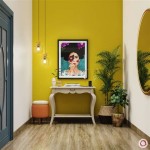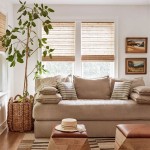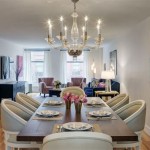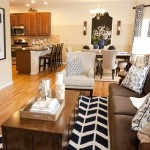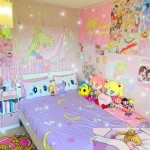How to Decorate a Dining Buffet Table
The dining buffet table serves as a versatile and often essential component of any dining space, transitioning seamlessly from a functional storage unit to a stylish centerpiece during gatherings and celebrations. Mastering its presentation and décor is paramount to both enhancing its aesthetic appeal and maximizing its utility. Effectively decorating a dining buffet table transforms it into more than just a surface; it becomes a curated display that elevates the dining experience, streamlines serving, and reflects the host's personal style. This article explores the key considerations and techniques for achieving a beautifully decorated and functional dining buffet table.
Planning and Purpose: Setting the Stage
Before initiating the decorating process, careful planning is crucial. Begin by identifying the specific purpose of the buffet display. Will it be used primarily for serving food, displaying décor items, or a combination of both? This determination influences the selection of items, their arrangement, and the overall aesthetic. Furthermore, consider the occasion for which the table is being styled. A casual brunch requires a different approach than a formal dinner party. The guest count also plays a role in determining the size and quantity of serving dishes and decorative elements. Taking time at this early stage to define the function of the table will prevent clutter and ensure the practicality of the setup.
Selecting the Right Foundation: Linens and Base Elements
The foundation of any well-decorated buffet begins with the selection of linens. A tablecloth provides a clean and elegant base, instantly unifying the aesthetic and protecting the table's surface. Neutral colors such as white, cream, or light gray offer versatility and allow decorative elements to stand out. Alternatively, a patterned or textured tablecloth can establish the overall theme. Runners and placemats can add layers and visual interest, defining serving areas or highlighting specific décor pieces. Complement the linens with other foundational elements. Consider a decorative tray or stand as a centerpiece. This will help lift items from the tabletop and create visual dimension. Adding a tablecloth can also enhance the surface and bring a more formal atmosphere to the table.
Arranging the Serving Essentials: Food, Drink, and Utensils
The core function of a buffet table is often to serve food and beverages. Proper arrangement of these essentials is critical for ease of access and efficient service. Prioritize the placement of serving dishes, ensuring they are grouped logically based on food type. Hot dishes are best situated near heat sources, while cold items should be placed near serving utensils and plates. Consider the flow of traffic. Place items in such a way that guests can easily move along the table in a logical sequence. Serveware can vary in materials. Offer serving utensils for each dish, placed conveniently beside or within the dish. Beverage options, including water pitchers, juice carafes, and bottles should be strategically placed.
Incorporating Decorative Accents: Adding Personality
Beyond functionality, decorative accents inject personality and theme into the buffet display. These elements can make the buffet table inviting and create a visual narrative. Choose decorative objects that complement the overall aesthetic and theme of the event. Consider using flowers or greenery to add color and freshness. A single, impressive floral arrangement or several smaller vases can make an impact. Candles, in varying heights and styles, provide a warm and inviting ambience, especially during evening events. Furthermore, framed prints, decorative bowls, or sculptures can serve as focal points. To avoid clutter, use these items sparingly. Choose pieces that enhance the overall theme without overwhelming the functionality of the table. Always consider how people will interact with the table and arrange decorations so that they do not impede serving.
Working with Height and Texture: Creating Dimension
Creating visual interest requires attention to height and texture. Avoid a flat, uniform arrangement by incorporating elements of varying heights. Use tiered serving stands, cake stands, or decorative risers to elevate certain items. This creates verticality and draws the eye. Experiment with different textures to add dimension and visual depth. The contrast of materials such as wood, metal, glass, and fabric can produce visual interest. Think about how colors and patterns can interact with each other; consider how lighting can accent elements of the arrangement. By carefully adjusting heights and textures, a buffet design can evolve from a simple display of food to an elaborate centerpiece that is dynamic and engaging.
Considering Lighting: Setting the Mood
Lighting plays a crucial role in the overall atmosphere of the dining buffet. The light source used will determine the focus of the table design. Natural light, when available, highlights the beauty of the food and decorative elements. However, artificial lighting can enhance the visual appeal of the display when used appropriately. Consider using a chandelier or pendant light positioned directly above the table. Alternatively, recessed lighting or track lighting can provide direct and focused illumination. Candlelight offers a warm and inviting ambiance, particularly for evening events. Utilize various lighting methods to highlight certain aspects of the buffet table, enhancing the visual interest and creating a welcoming atmosphere for guests.
Maintaining Balance and Harmony: Achieving Cohesion
The ultimate goal of buffet table decoration is to achieve balance and harmony. Ensure that the arrangement is visually appealing and easy to navigate. Avoid placing items that are too closely together, or at risk of being knocked over by accident. Maintain a balance between decorative and functional elements. Avoid the appearance of either clutter or barrenness. Arrange elements in a way that flows naturally and complements the overall aesthetic and theme of the dining space. As with any design endeavor, the key is to approach the decoration thoughtfully, keeping the original purpose of the buffet table and the needs of the event in mind. Take the time to experiment. Altering the positioning and arrangement of the buffet table's components can quickly change the final appearance.

How To Decorate A Buffet Table 10 Ideas Marly Dice Sideboard Decor Dining Room

5 Tips How To Decorate A Buffet Dining Room Table Decor

How To Style Your Dining Room Buffet Like A Pro Table Decor

Winter Buffet Table In The Dining Room

How To Decorate A Buffet Living Spaces

Thrifty And Chic Diy Projects Home Decor

How To Decorate A Buffet Sideboard Console Or Other Flat Surface Dining Room Decor

How To Decorate A Buffet Sideboard Console Or Other Flat Surface Stonegable

Dining Room Buffet Table Diy

Where Ideas For Your Home Meet Inspiration Heart Dining Room Buffet Table Decor
Related Posts
